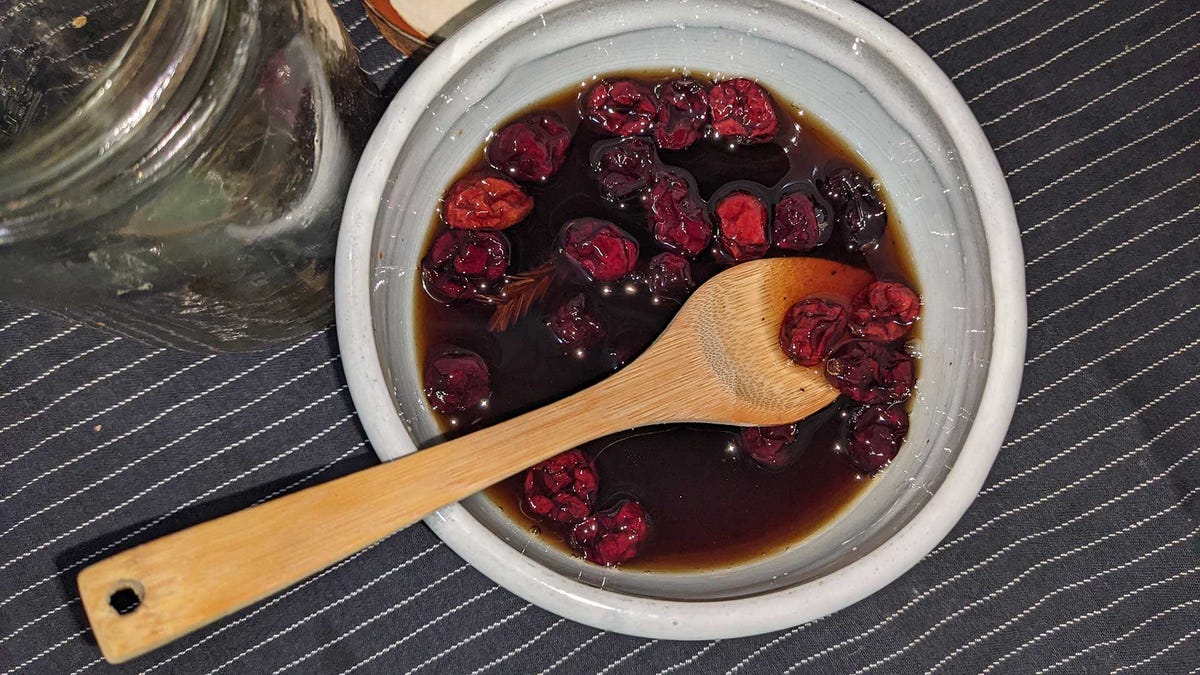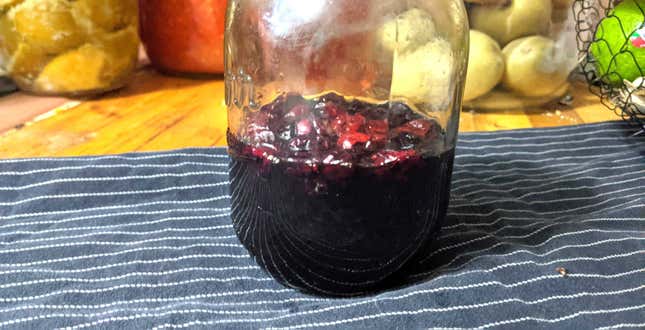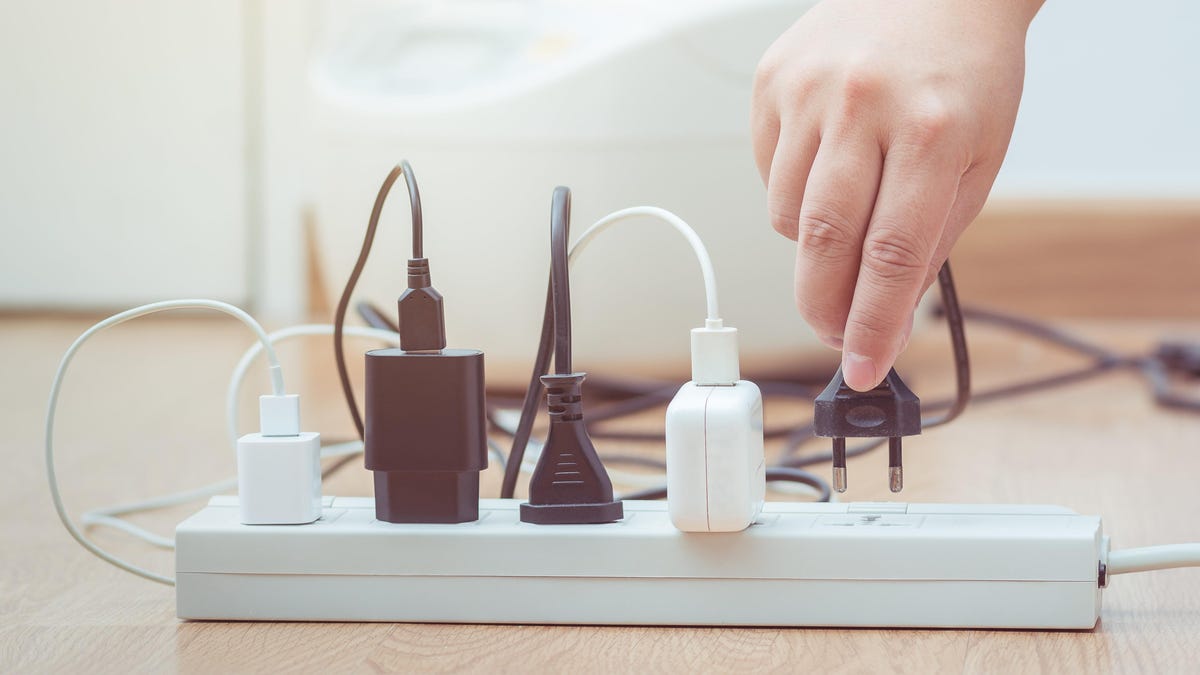Fermented Cranberry Sauce Is a Revelation
The Thanksgiving table doesn’t leave a ton of room for real innovation if you’re sticking to the classics. What I feel the spread often lacks is hits of brightness and slaps of deep flavor amongst the richness and heft...

The Thanksgiving table doesn’t leave a ton of room for real innovation if you’re sticking to the classics. What I feel the spread often lacks is hits of brightness and slaps of deep flavor amongst the richness and heft of meat, potatoes, and gravy. That’s a role that is supposed to be filled by relishes like cranberry sauce, but too often we saddle the berries with sugar and gelatin, resulting in more heaviness and blandness on the table. However, if you’re willing to play around a little, I can promise a brighter, effervescent version of your cranberry sauce through fermentation.
A ginger bug is a fermentation starter
Before we start, it’s important to note that with fermentation, cleanliness is setting yourself up for success: Fermentation is letting good bacteria bloom, but the same conditions can let bad bacteria fester, so you want to do what you can to make sure those bad germs aren’t introduced on the spoons, on your hands, in the jars, etc. I like to use white vinegar sprayed on as a final rinse to items I use for fermentation, just to be sure.
Now, we’re going to do this in two parts—first by creating a ginger bug, a common starter culture in fermentation. To do so, you want to grab a bottle of raw honey and some ginger root. Into a very clean jar, you’re going to pour a cup of honey. With clean hands, chop up a tablespoon of ginger, skin on, into matchsticks. Add the ginger to the honey, and stir it with a very clean spoon. Put the cover on the jar, and place it in a dark place in your kitchen where you’re not likely to forget about it.
Every morning, you’re going to pop the lid to let out CO2 and let fresh air in. After the first day or two, you’ll likely see bubbles emerge when you open the jar, and that is how you know fermentation is happening. (How long it takes for bubbles to form can vary depending on things like temperature and humidity.) Like a sourdough starter, your little ginger bug will die without being fed, so give it more honey each morning, just a tablespoon or two. Those bubbles will become more active with each day, and on day three of bubbles, it’s time to start the next part of the recipe.
Your cranberry base is a mix of citrus, maple, and berries
Usually when you make cranberry sauce, you use a lot of sugar—we’re going to use maple syrup in place of that sugar, to get some depth. You can also use molasses if you’d like to deepen it more, or honey if you’d prefer less. Take a pound of cranberries (usually what’s in a bag) to a bowl, and add ¾ cup of maple syrup to it, and then add the zest of a whole orange. Again, here’s where you can play around a little: While orange makes sense to me, you just need some type of citrus. Grapefruit would also be delightful, and if you can get ahold of a blood orange, go for it. Otherwise, you need two tablespoons of zest, which you should add to the cranberries, and then juice the orange into the mix as well. This will be about ¼ cup of juice, if you’re using something other than a standard orange. We’re not adding spices at this point; that’ll come later.
Create texture in your cranberry sauce to your liking
Add this mixture to your Cuisinart or blender. I like the Cuisinart because there isn’t a ton of liquid, and pulsing your cuisinart will help you crush the fruit effectively, while a blender might just crush what’s at the bottom. You could also try a stick blender. We’re looking for each individual cranberry to get at least a little pulverized, but for texture, the finished product can be anywhere from chunky to smooth—that’s a personal preference. I like to leave it quite chunky, like a salsa.
Scrape the entire blended mixture into a half gallon jar, making sure the jar and the scraper are exceptionally clean. This is a standard-sized Ball jar, and you can pick up one at Michaels for a few dollars, or a six pack from most places that sell jars. (I find them least expensive at True Value, Winco, or Walmart.) Once it’s in the jar, you’re going to add four tablespoons of the honey from the ginger bug, but leave the ginger behind.
Get your cranberries fermenting in the dark
Use the scraper to mix the honey in, then use it to scrape down the sides of the jar, so they’re clean. Now place a fermentation lid on the mixture, and put it in a dark place. It’s really worth having a fermentation lid, as it allows the gas to escape without letting air in, so you’re less likely to infect the fermentation with yeast from the air. If you’re willing to risk it, just put any lid on the jar and make sure to burp it (open it and close it) once a day. You’ll want to check it daily for the same signs of fermentation you had with the ginger bug. Bubbles are the sign things are working! Once you see fermentation, you need to feed it with sugar, so more maple syrup, honey, molasses, or sugar. Depending on how close you are to Thanksgiving, you may want to slow down your ferment, which you can do by putting the jar in the fridge. Otherwise, just keep feeding it, and the flavors will mellow more and more over time.
If you see white fuzz appear at the top, don’t distress. That is kahm yeast, and while it doesn’t taste great, it’s not dangerous. You could start over, or you can boil the mixture for a minute, which will kill the kahm yeast, let it cool and add more starter culture (more honey from the ginger bug) to restart it. Kahm yeast means that either the jars weren’t clean, or the ferment picked up yeast in the room, or it was present in the cranberries before they went in.
Before you serve it, taste it, and season it as needed to your taste. I like to add in fresh ginger, black pepper, a little bit of salt, and then some star anise and cardamom, but you can use more traditional spices like cinnamon and clove.
Once it arrives at the table, you have a completely fresh take on cranberry sauce. It will be bright, and the bubbles create an effervescence that makes every bite of turkey a lighter, more joyful experience.

Photo: Amanda Blum
Fermented Cranberry Sauce
Ingredients
One small knob of fresh gingerTwo cups of raw honey¾ cup of maple syrupOne large orangeOne pound of cranberriesOptional:
Seasonings to taste (salt, peppercorn, cardamom, star anise, cinnamon, clove, etc.)Equipment
One pint sized jar with lidOne half gallon wide mouth jarOne fermentation lidCuisinart or hand blender1. Add one tablespoon of chopped ginger, skin on, to one cup of honey, in the pint jar. Cover with lid, and burp the lid once a day. Once bubbles form when you burp the lid, begin adding honey daily, one tablespoon at a time. On day 3 of bubbles, move onto step two.
2. Separately, combine cranberries with the zest and juice of the orange and maple syrup. Using Cuisinart or blender, crush to desired consistency, from smooth to chunky.
3. Add the mixture to a half gallon jar, add four tablespoons of honey from the starter bug, and then cover with a fermentation lid. Allow the mixture to sit in a dark place until bubbles form. Then add one tablespoon of honey or maple syrup daily.
4. Season before serving with spices to your liking.

 BigThink
BigThink 
































